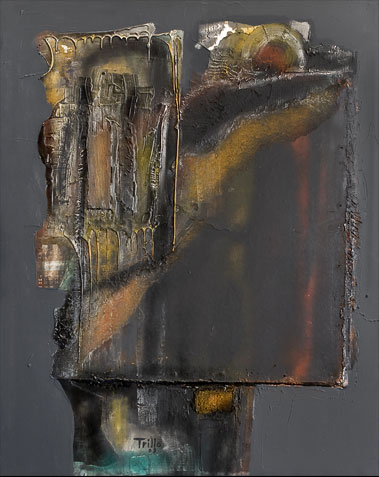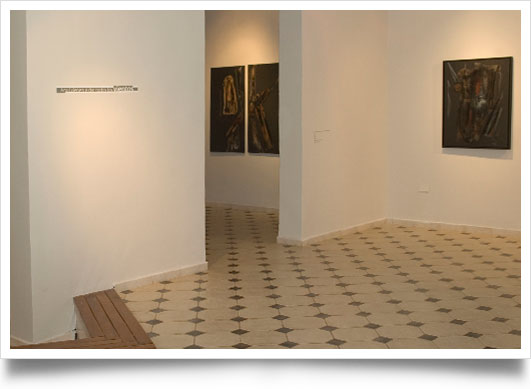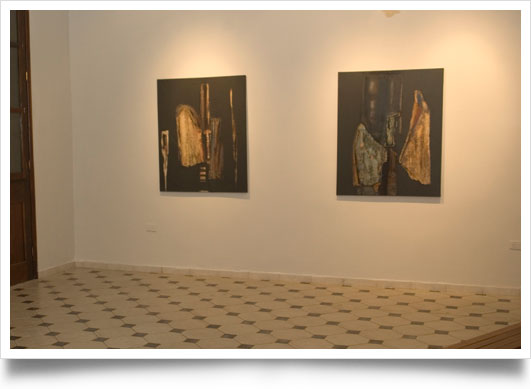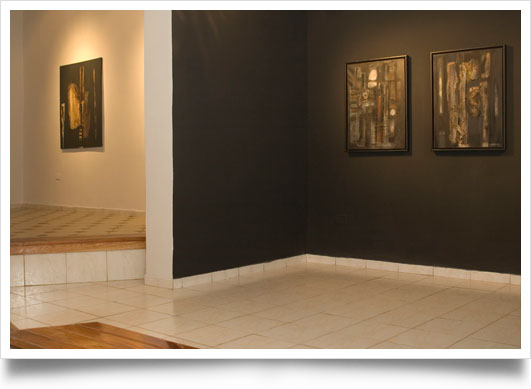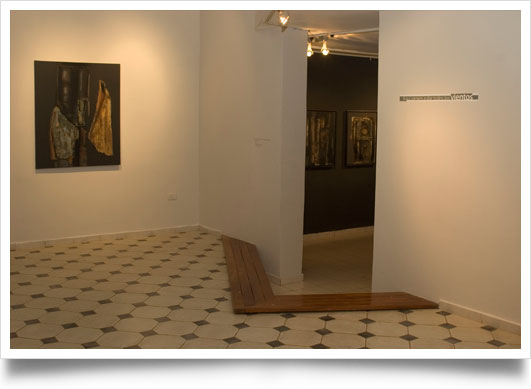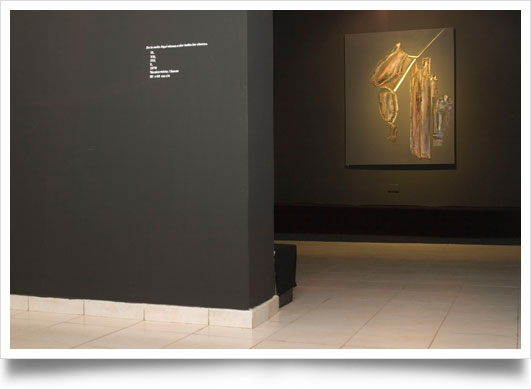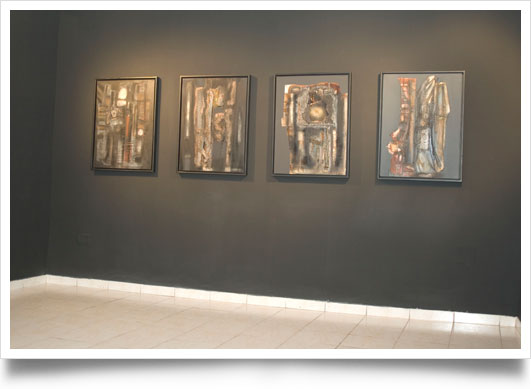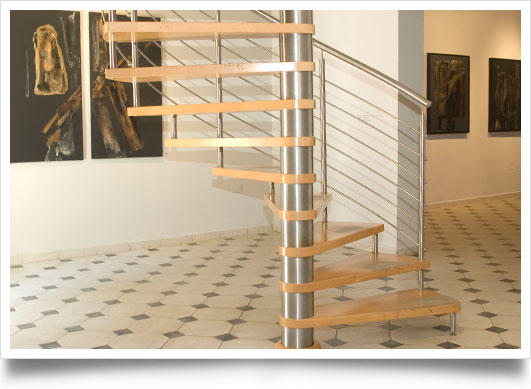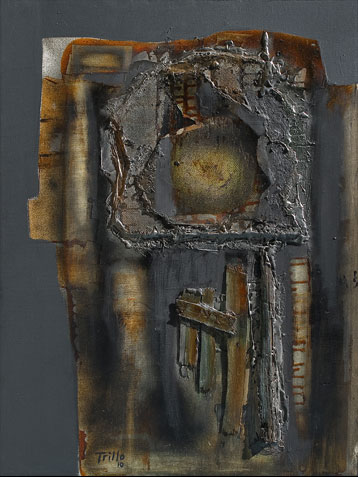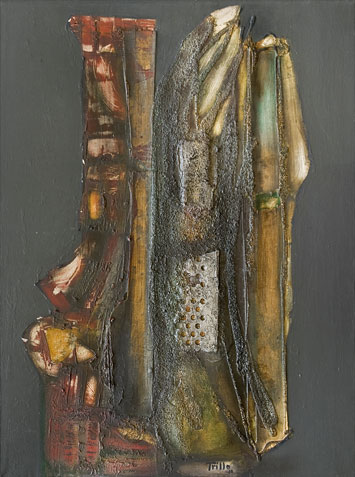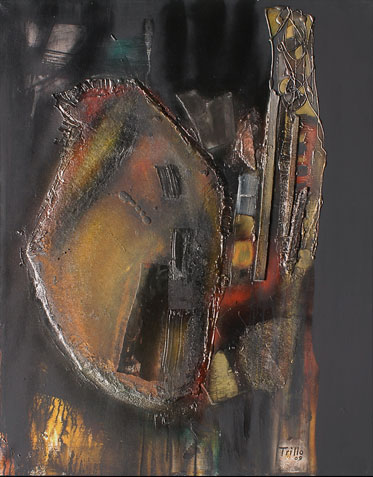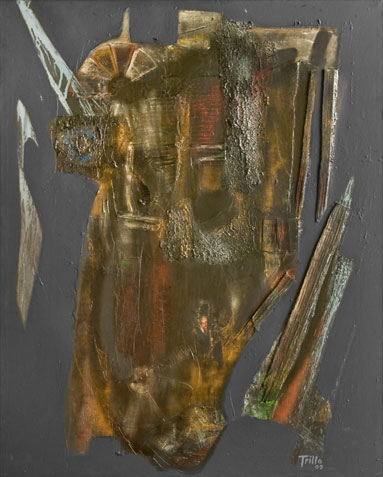All winds end here
All winds end here
This is all and it is not sufficient
but perhaps it will let you know
that I am still here
Bertold Brecht
When I remember that Lezama Lima so much promoted in his centennial created imaginary eras, and that the seventh of them was called The Stones Throughout History, I dare to infer that, had he coincided in time with my admired friend Trillo, they would have started a profound intertextual dialogue presided by an image created by the artist and the interpretational philosophy of the poet of Orígenes, also a suggestive name for the painter’s present series, which seems to go deeper into his conceptual framework.
The cultural action of making poetry is not exclusive of the writers who cultivate it, and in this series an apocalyptical poetry emerges, perhaps provoked by the moment the world is living. I was always more impressed by Leonardo’s drawings than by his finished work. And something similar occurs to me with Goya and his Caprices if I place them next to Charles IV’s family, in spite of this being one of my favorite pictorial works. And analyzing myself without prejudices, I have come to the conclusion that what I enjoy is the deduction, what I add as expression of an exacerbated ego. What could I add to those works, preferred to others of the same authorship? Nothing. That nothing excites me.
With Trillo’s work I experience the same thing. In his assemblage expression of abstraction there is a principle the assemblage interpreted according to each work by a supporting actor like asphaltite, a corrugated cardboard or a sand structure or the opaque glow of rusty silver or copper as leading characters; or as many other material proposals or materials proposed by the artist which sometimes include the texture or smoothness of the support in the fashion of a Greek chorus. These proposals bring about an unconscious pictorial completion that is unique for each spectator, and at that moment of expectant creativity the miracle of the communion between the artist and his public occurs. A magic, one-and-only second.
I believe that such contemplative and unique communion with his painting is what makes Trillo’s work be in force. Each exhibition, each work created by his hands or each one of his improvised surprises created by gravity, the force of gravity in his drippings the abused dripping and the controlled informal nature of his designs vary in his series, in my opinion emerged as a result of inner forces that vary with his state of mind, with his rich and hardly discovered inner world of his origins, of which he zealously keeps the password. His language has to be deciphered being deprived of intentions; you have to let yourself be taken by the wind. In that way you can experience a retrospective pleasure that is totally strange to one’s own will and recall Tanizaki’s Praise of the Shadow.
All Winds End Here has surprised me with the use of some uncommon colors in his traditional palette, which always introduced the range of ochres and siennas, black, white and blues. Some young reds, greens and oranges appear. His customary assemblage textures include the permanent control of the informal, his apparent drawings welding together on a flat background, a background that at times does not submit but acquires its own personality. In the unleashed energy of this series, a display of creative force, of pictorial magma where the surprise accompanies me and the novelty disconcerts me, I recognize his renewed trace, and, persuaded, I submit myself and greet the artist. Today, in Cuba, the roads he opened are already being followed. HAIL, TRILLO!
Daniel M. Taboada Espiniella
Havana, April 2011
Artworks
From the series: All Winds end here
Carlos Trillo 2011From the series: All Winds end here
Carlos Trillo 2010From the series: All Winds end here
Carlos Trillo 2010From the series: All Winds end here
Carlos Trillo 2009From the series: All Winds end here
Carlos Trillo 2009From the series: All Winds end here
Carlos Trillo 2009From the series: All Winds end here
Carlos Trillo 2009Artists
